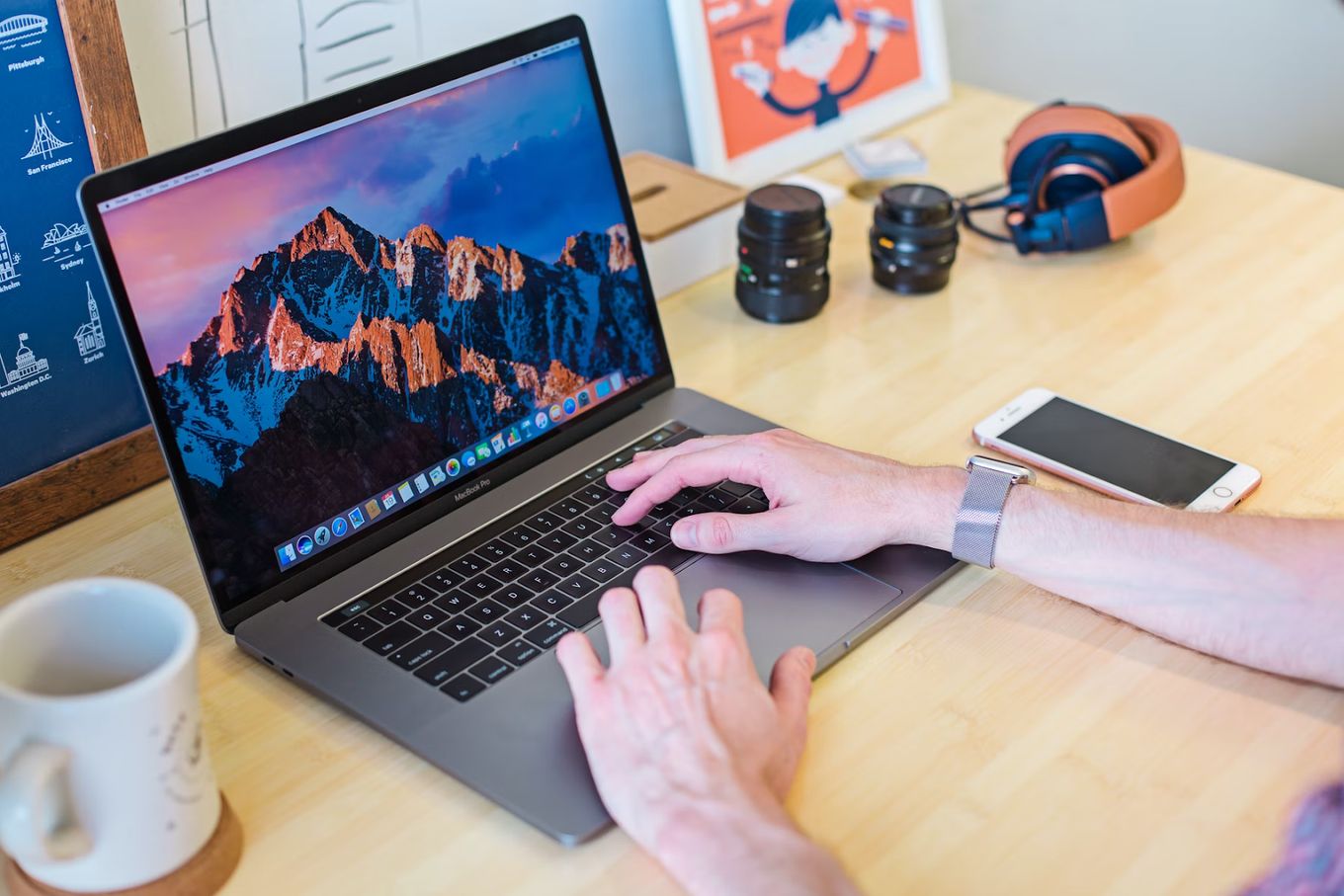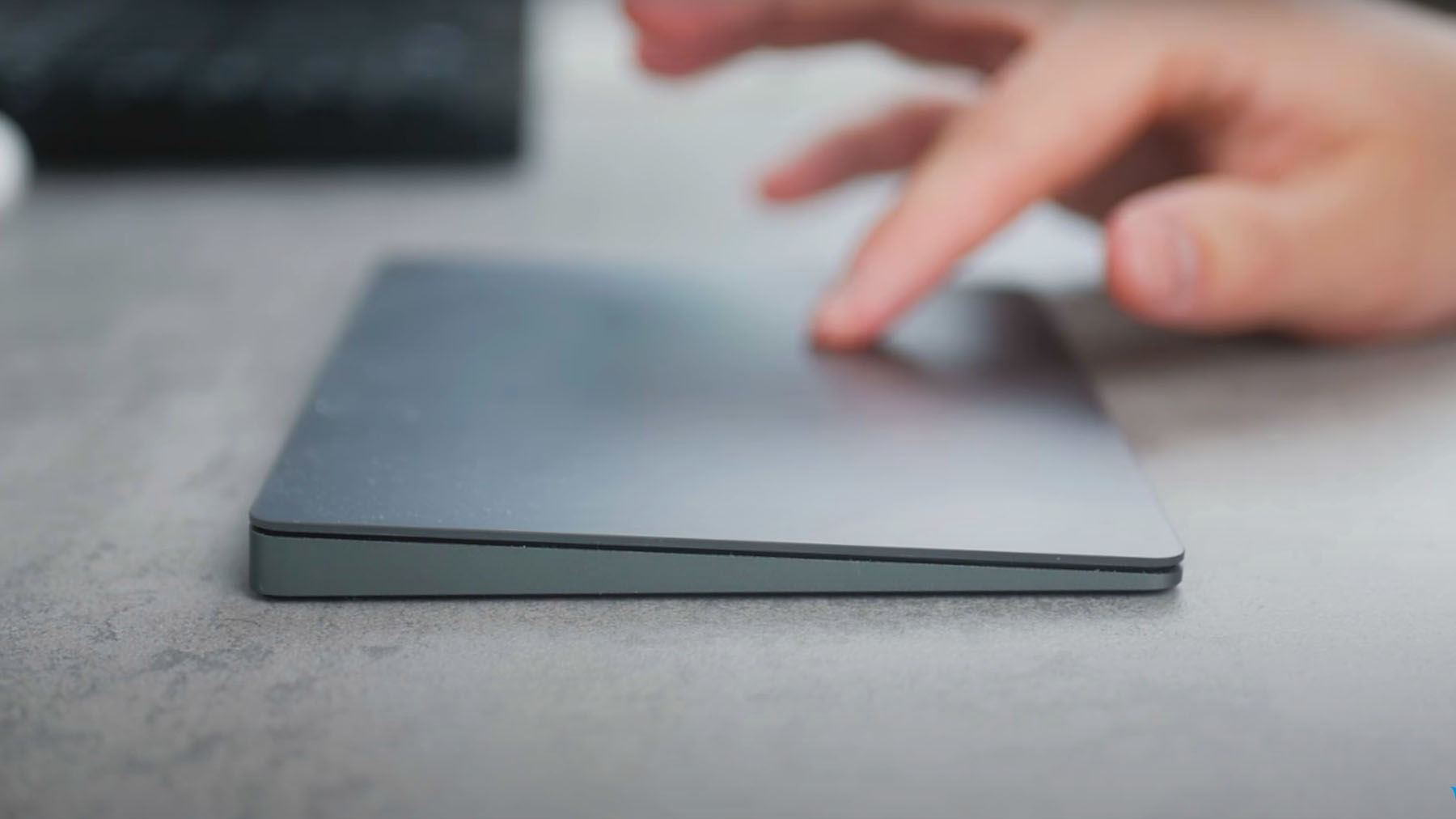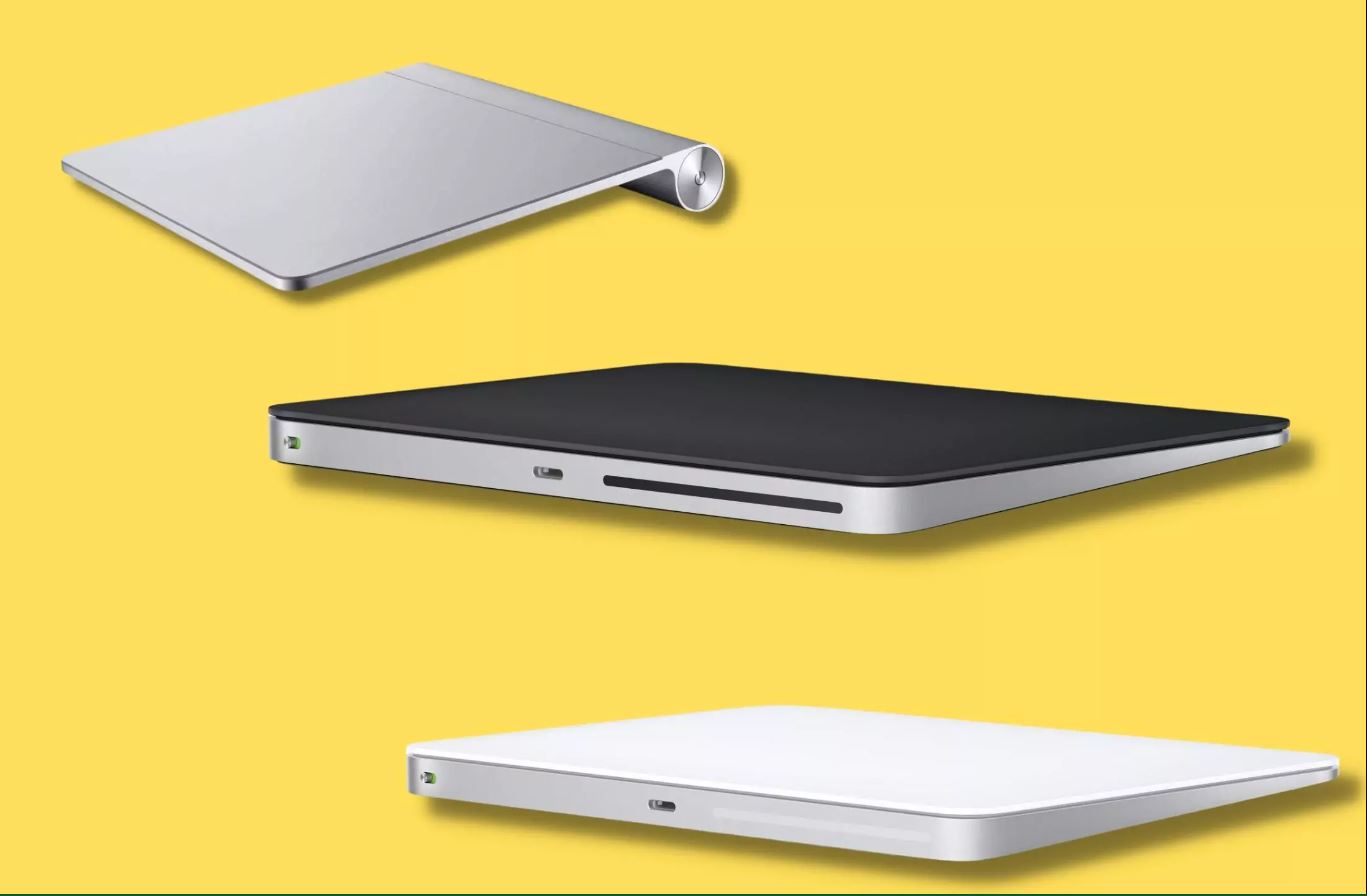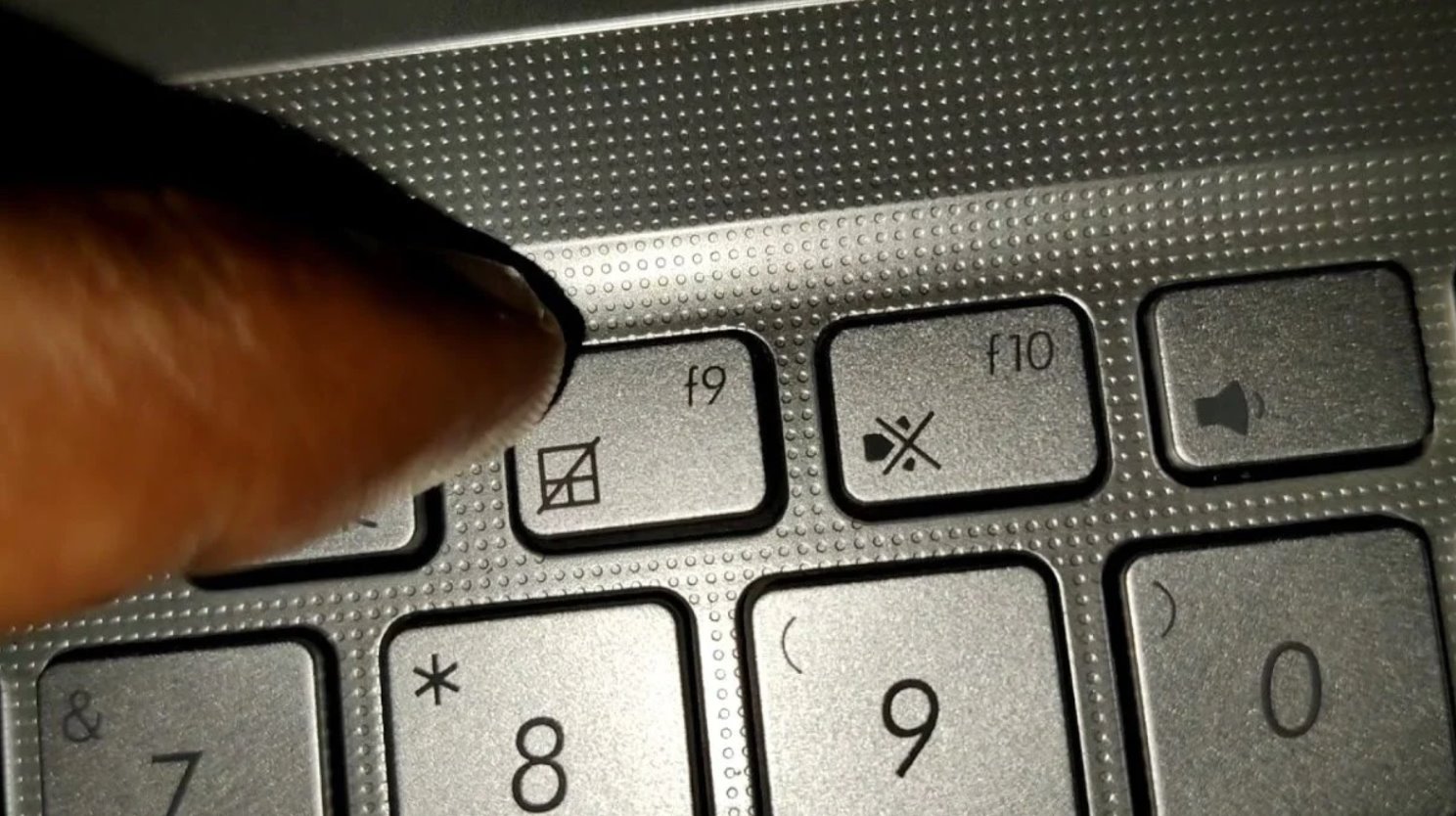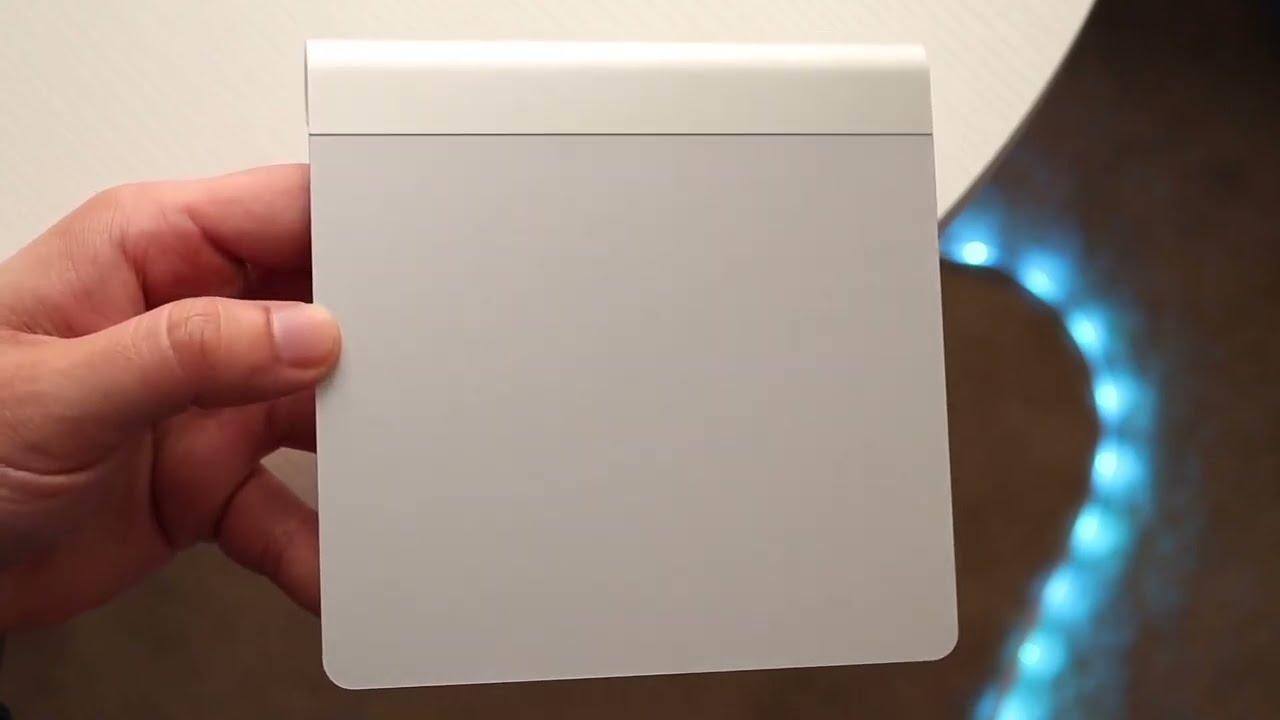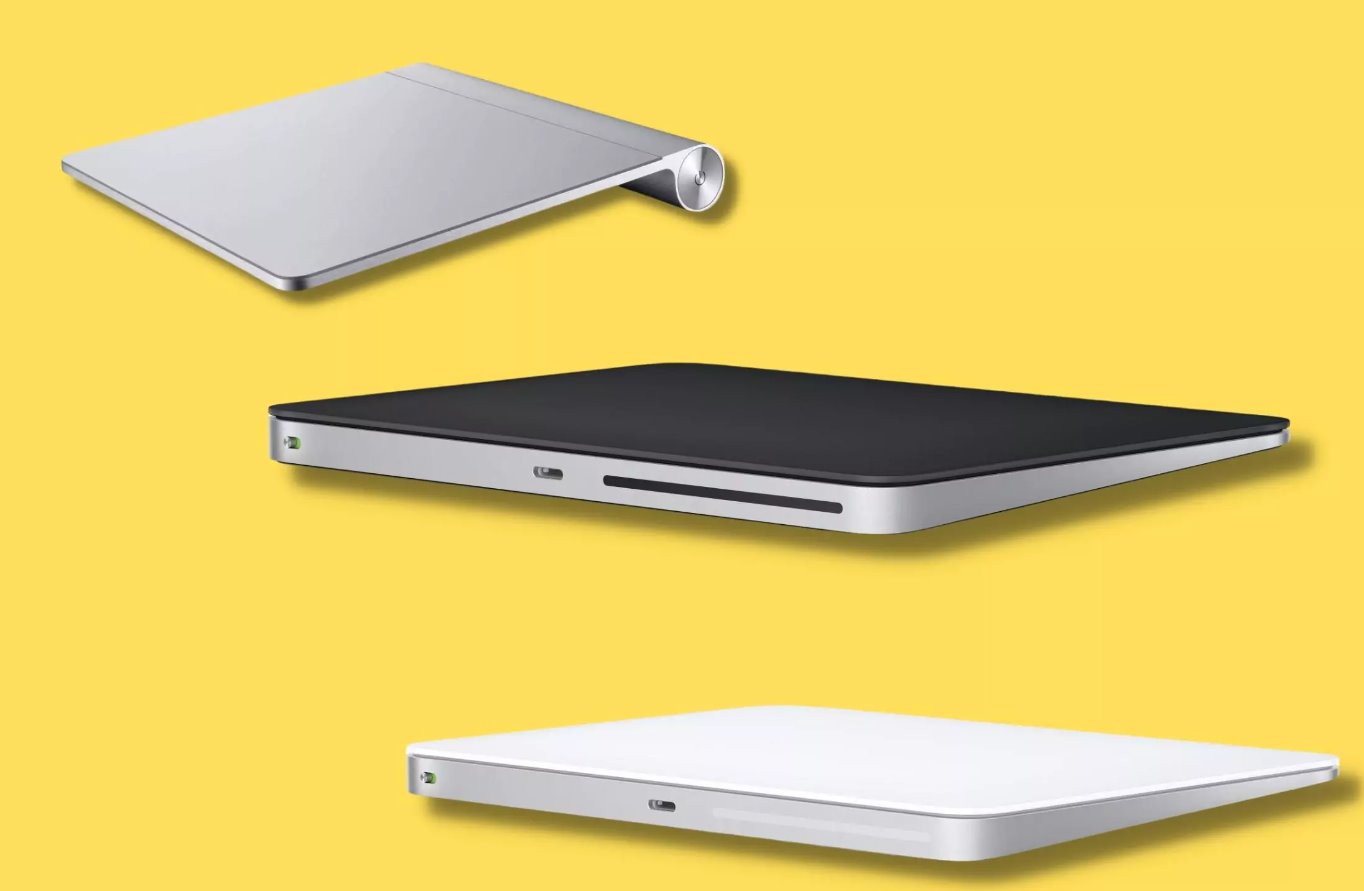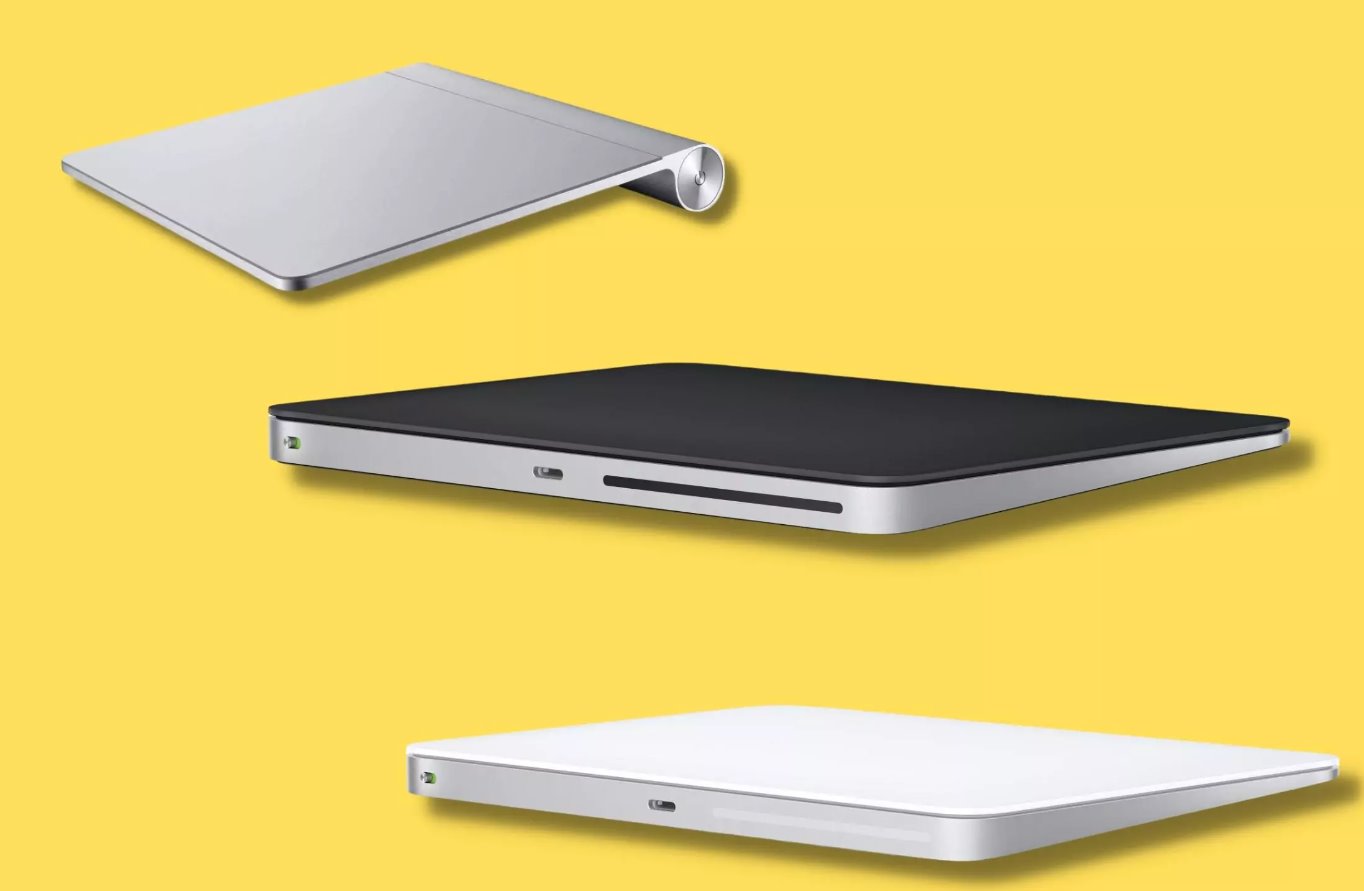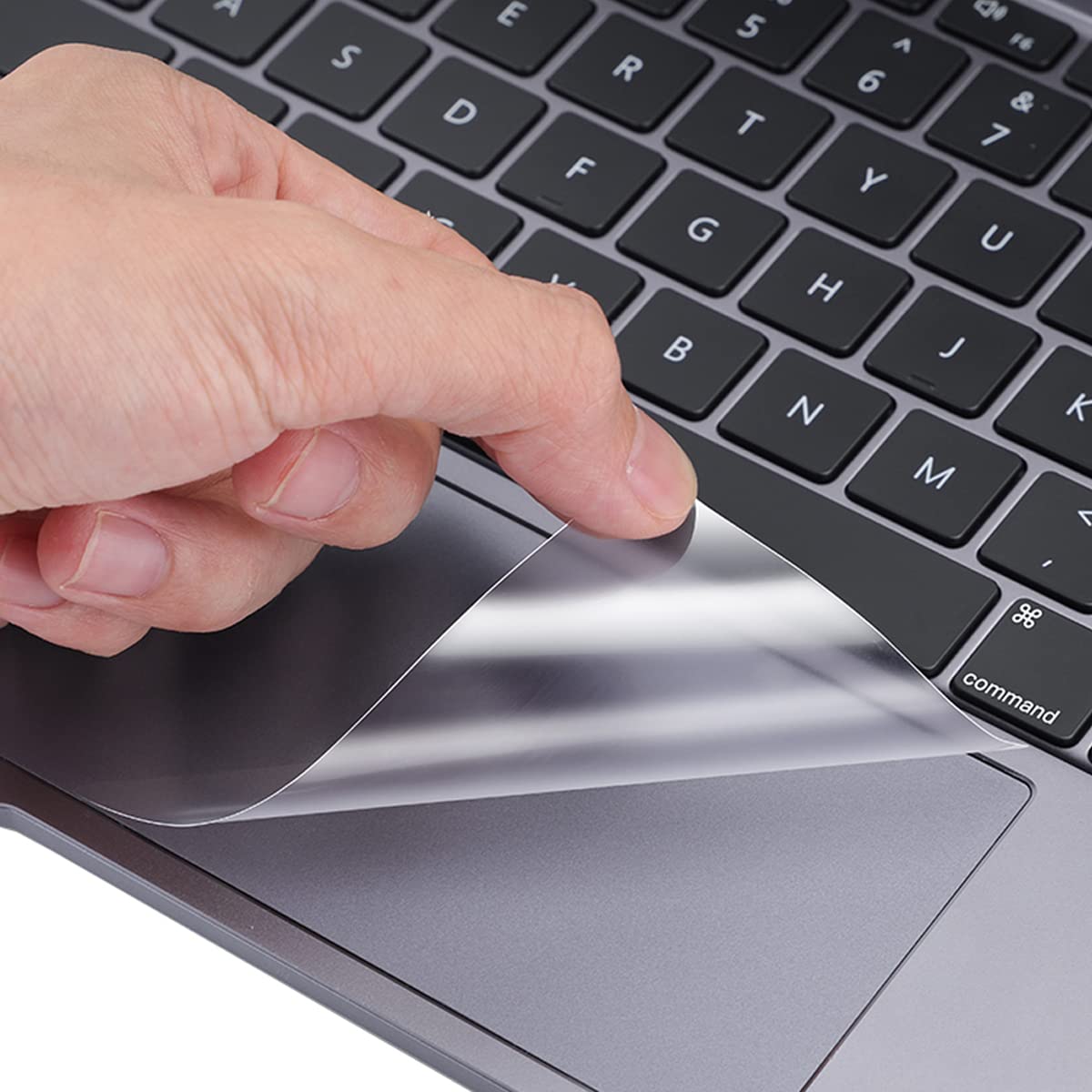Introduction
Have you ever found yourself frantically scrolling your fingers across the trackpad of your laptop or computer, only to realize that nothing is happening? It can be incredibly frustrating when your trackpad refuses to cooperate and won’t scroll as it should. This issue can hinder your productivity and make using your device a real challenge.
Fortunately, there are several common reasons why your trackpad may not be scrolling properly. By understanding these reasons and following some simple troubleshooting steps, you can get your trackpad back on track and scrolling smoothly.
In this article, we will explore the most common causes of trackpad scrolling issues and provide you with effective solutions to resolve them. Whether you’re using a Windows PC, a Macbook, or a Chromebook, these troubleshooting tips will help you get your trackpad scrolling like it should.
So, if you’re tired of wrestling with an unresponsive trackpad, keep reading to learn how to diagnose and fix the problem, and regain control over your scrolling capabilities.
Common Reasons Why Your Trackpad Won’t Scroll
There can be several reasons why your trackpad is not functioning properly and refusing to scroll. By understanding these common issues, you can narrow down the cause and find an appropriate solution. Here are some potential reasons for your trackpad scrolling woes:
- Trackpad Scroll is Disabled: Sometimes, trackpad scrolling can accidentally get disabled. It is a common oversight, especially if you have recently made changes to your trackpad settings or updated your device’s software.
- Outdated or Incompatible Trackpad Driver: Outdated or incompatible trackpad drivers can also lead to scrolling issues. If you recently updated your operating system or installed new software, it’s possible that the trackpad driver is no longer compatible with the changes, causing it to malfunction.
- Trackpad Gestures Need to be Configured: Modern trackpads often come with a range of gesture options, such as two-finger scrolling or pinch-to-zoom. If these gestures are not properly configured or enabled, it can result in the trackpad not responding to your scrolling actions.
- Physical Trackpad Issues: Physical hardware problems can also prevent your trackpad from scrolling. This may include issues like dirt or debris clogging the trackpad mechanism, a worn-out trackpad surface, or physical damage to the trackpad itself.
- Software or System Glitches: Sometimes, software glitches or system errors can interfere with the normal functioning of your trackpad. These glitches can occur due to various reasons, such as recent software updates, conflicts with other programs, or issues with the operating system itself.
Now that we have identified some common causes of trackpad scrolling issues, it’s time to delve into troubleshooting steps to fix these problems. By following these steps, you can resolve the majority of trackpad scrolling problems and regain control over your scrolling capabilities.
Trackpad Scroll is Disabled
One of the simplest explanations for your trackpad not scrolling is that the scrolling feature may have accidentally been disabled. This can happen if you unintentionally made changes to your trackpad settings or if there was a recent software update that altered the default settings. To check if your trackpad scroll is disabled, follow these steps:
- On a Windows PC, go to the Control Panel or Settings and look for the “Mouse” or “Trackpad” settings. In the settings menu, there should be an option to enable or disable trackpad scrolling.
- On a Macbook, click on the Apple menu and go to “System Preferences.” From there, click on “Trackpad” and navigate to the “Scroll & Zoom” tab. Ensure that the option for “Scroll direction: natural” is selected.
- On a Chromebook, click on the taskbar and select the gear icon to access the settings. Look for the “Touchpad” section and ensure that the option for “Enable tap dragging” or “Two-finger scroll” is enabled.
If you find that trackpad scrolling was indeed disabled, simply enable the option and test if the scrolling functionality has been restored. In many cases, this straightforward solution can quickly fix the problem.
If enabling trackpad scrolling didn’t solve the issue, continue troubleshooting with the next possible cause: outdated or incompatible trackpad drivers.
Outdated or Incompatible Trackpad Driver
An outdated or incompatible trackpad driver can cause issues with scrolling functionality. Drivers are software that allow your operating system to communicate with and control hardware devices, such as your trackpad. If the trackpad driver is outdated or incompatible with your current operating system version, it may result in the trackpad not responding to scrolling actions.
To address this issue, follow these steps to update or reinstall the trackpad driver:
- On a Windows PC, right-click on the Start button and select “Device Manager.” In the Device Manager window, expand the “Mice and other pointing devices” category. Right-click on your trackpad device and choose “Update driver” or “Uninstall device.” If you choose to update the driver, your system will search for the latest version and install it. If you choose to uninstall the device, restart your computer, and Windows will reinstall the driver automatically.
- On a Macbook, click on the Apple menu and go to “System Preferences.” From there, click on “Trackpad” and navigate to the “Point & Click” tab. Check for any updates by clicking on the “Update Now” button.
- On a Chromebook, click on the taskbar and select the gear icon to access the settings. Look for the “About Chrome OS” option and click on it. From there, click on “Check for updates” to ensure that your Chromebook is running the latest software version, including trackpad driver updates.
After updating or reinstalling the trackpad driver, test if the scrolling functionality is restored. If not, proceed to the next troubleshooting step: configuring trackpad gestures.
Trackpad Gestures Need to be Configured
If your trackpad gestures are not properly configured, it can lead to scrolling issues. Modern trackpads often come with a variety of gestures, such as two-finger scrolling, pinch-to-zoom, or three-finger swiping. If these gestures are disabled or configured incorrectly, your trackpad may not respond to scrolling actions.
To configure trackpad gestures and ensure that scrolling is enabled, follow these steps:
- On a Windows PC, go to the Control Panel or Settings and access the “Mouse” or “Trackpad” settings. Look for a tab or section specifically related to gestures or scrolling. Make sure that the appropriate gestures are enabled, particularly two-finger scrolling or any other scrolling gesture you prefer.
- On a Macbook, click on the Apple menu and go to “System Preferences.” From there, click on “Trackpad” and navigate to the “Scroll & Zoom” tab. Ensure that the scrolling gesture, such as “Scroll direction: natural,” is selected. You can also customize other gestures according to your preference.
- On a Chromebook, click on the taskbar and select the gear icon to access the settings. Look for the “Touchpad” section and check if the option for “Two-finger scroll” or any other scrolling gesture is enabled. If not, enable it to enable scrolling on your trackpad.
After configuring the trackpad gestures, test if the scrolling feature is working correctly. If the issue persists, move on to the next troubleshooting step: checking for physical trackpad issues.
Physical Trackpad Issues
In some cases, the reason why your trackpad won’t scroll is due to physical issues with the trackpad itself. Physical hardware problems can hinder its normal functioning and prevent scrolling actions. Here are some common physical trackpad issues to consider:
- Dirt or debris: Over time, dirt, dust, or debris can accumulate on the trackpad surface or underneath the edges. This build-up can interfere with the trackpad’s sensor, making scrolling difficult or unresponsive. Use a soft, lint-free cloth to gently clean the trackpad surface and remove any visible dirt or debris. Avoid using harsh cleaning solutions as they can damage the trackpad surface.
- Worn-out trackpad surface: With regular use, the trackpad surface can become worn down, leading to decreased sensitivity or uneven performance. If cleaning the trackpad surface did not resolve the scrolling issue, it could be a sign that the trackpad surface needs to be replaced. Contact the manufacturer or a certified technician to inquire about repair or replacement options.
- Physical damage: Accidental drops or impacts can cause physical damage to the trackpad, affecting its functionality. Inspect your trackpad for any visible signs of damage, such as cracks or loose components. If physical damage is evident, it may require professional repair or replacement.
If you suspect that physical issues are causing the trackpad scrolling problem, it is recommended to seek assistance from a professional or contact the manufacturer for guidance on how to resolve the issue. Once you have ruled out physical issues, you can proceed with the next troubleshooting step: addressing software or system glitches.
Software or System Glitches
Software or system glitches can also be responsible for your trackpad not scrolling properly. These glitches can occur due to various reasons, such as recent software updates, conflicts with other programs, or issues with the operating system itself. Here’s how you can troubleshoot software or system glitches:
- Restart your device: Sometimes, a simple restart can resolve temporary software or system glitches that may be causing the trackpad scrolling issue. Turn off your device, wait for a few seconds, and then turn it back on. After the restart, check if the trackpad scrolling functionality has been restored.
- Update operating system: Ensure that your device’s operating system is up to date. Manufacturers often release updates that address known issues or bugs, including trackpad-related problems. Check for any available updates and install them accordingly.
- Uninstall conflicting software: If you recently installed new software or applications, it’s possible that they are conflicting with your trackpad driver or settings. Try uninstalling any recently added programs and check if the trackpad scrolling problem persists. If the issue is resolved after uninstallation, consider reinstalling the software or finding an alternative solution.
- Perform a system restore: If the trackpad scrolling issue started after a significant software or system change, you can try performing a system restore. This will revert your device’s settings back to a previous date when the trackpad was functioning correctly. Remember to backup your important files before proceeding with a system restore.
If none of the above steps resolve the trackpad scrolling issue, it may be necessary to seek further technical assistance from the manufacturer’s support team or a professional technician. They will have the expertise to diagnose and fix any underlying software or system glitches that may be causing the problem.
Troubleshooting Steps to Fix Trackpad Scrolling Issues
When your trackpad refuses to scroll, it can be frustrating, but there are several troubleshooting steps you can take to resolve the issue. By following these steps, you can identify and address the underlying causes of trackpad scrolling problems. Here’s a summary of the troubleshooting steps discussed earlier:
- Check Trackpad Settings: Ensure that trackpad scrolling is enabled in the settings menu of your device. Adjust any necessary settings to enable scrolling.
- Update or Reinstall Trackpad Driver: Update or reinstall the trackpad driver to ensure compatibility and overcome any known issues or bugs.
- Configure Trackpad Gestures: Check that the trackpad gestures, including scrolling gestures, are properly configured and enabled according to your preference.
- Clean and Maintain Trackpad Hardware: Clean the trackpad surface from dirt or debris and inspect for any physical damage or worn-out components.
- Restart or Reset Your Device: Restart your device to resolve temporary software or system glitches. If necessary, perform a system restore to revert settings back to a previous date.
By systematically going through these troubleshooting steps, you can often pinpoint the cause of the trackpad scrolling issue and find an appropriate solution. Remember to test the trackpad scrolling functionality after each step to assess whether the problem has been resolved.
If none of these steps are successful in restoring trackpad scrolling, it may be necessary to seek professional assistance or contact the manufacturer’s support team for further guidance. They will have the expertise to diagnose and resolve more complex trackpad issues that may require advanced troubleshooting or hardware repair.
Check Trackpad Settings
One of the first steps to troubleshoot trackpad scrolling issues is to ensure that the trackpad settings are properly configured. Sometimes, the scrolling feature may have accidentally been disabled or altered, leading to the problem. To check and adjust the trackpad settings, follow these steps:
- On a Windows PC:
- Go to the Control Panel or Settings on your computer.
- Look for the “Mouse” or “Trackpad” settings.
- In the settings menu, navigate to the “Scrolling” or “Touchpad” tab.
- Ensure that the option for trackpad scrolling is enabled.
- You may also have additional options to customize scroll direction, speed, or other scrolling-related settings.
- On a Macbook:
- Click on the Apple menu in the top-left corner of the screen.
- Select “System Preferences” from the drop-down menu.
- Click on “Trackpad” or “Accessibility” in the System Preferences window.
- Navigate to the “Scroll & Zoom” tab.
- Ensure that the option for “Scroll direction: natural” is selected.
- You can also adjust other trackpad settings, such as scrolling speed or gestures, according to your preference.
- On a Chromebook:
- Click on the taskbar in the bottom-right corner of the screen.
- Select the gear icon to access the settings.
- In the settings menu, look for the “Touchpad” section.
- Ensure that the option for “Two-finger scroll” or any other scrolling gesture is enabled.
- You may also have additional options to customize touchpad sensitivity or other related settings.
After checking and adjusting the trackpad settings, test if the scrolling functionality has been restored. If the issue persists, proceed to the next troubleshooting step to further diagnose the problem.
Update or Reinstall Trackpad Driver
If checking the trackpad settings did not resolve the scrolling issue, the next step is to update or reinstall the trackpad driver. A trackpad driver is software that allows the operating system to communicate effectively with your trackpad hardware. Outdated or incompatible drivers can cause the trackpad to malfunction, including issues with scrolling. Here’s how you can update or reinstall the trackpad driver:
- On a Windows PC:
- Right-click on the Start button and select “Device Manager.”
- In the Device Manager window, find and expand the “Mice and other pointing devices” category.
- Locate your trackpad device (it may be listed as a “Synaptics Touchpad” or a similar name).
- Right-click on the trackpad device and select either “Update driver” or “Uninstall device.”
- If you choose to update the driver, Windows will search for the latest version and install it. If you choose to uninstall the device, restart your computer, and Windows will automatically reinstall the driver.
- On a Macbook:
- Click on the Apple menu in the top-left corner of the screen.
- Select “System Preferences” from the drop-down menu.
- In the System Preferences window, click on “Software Update.”
- If there are any available updates, including trackpad driver updates, install them.
- If you suspect that the trackpad driver is causing the problem, you can try reinstalling the macOS. This will also reinstall all necessary drivers, including the trackpad driver.
- On a Chromebook:
- Click on the taskbar in the bottom-right corner of the screen.
- Select the gear icon to access the settings.
- In the settings menu, look for the “About Chrome OS” option.
- Click on “Check for updates” to ensure that your Chromebook is running the latest software version, including trackpad driver updates.
After updating or reinstalling the trackpad driver, test if the scrolling functionality is restored. If the problem persists, proceed to the next troubleshooting step to further diagnose the issue.
Configure Trackpad Gestures
If updating or reinstalling the trackpad driver did not fix the scrolling issue, the next step is to ensure that the trackpad gestures are properly configured. Modern trackpads often come with a variety of gestures, such as two-finger scrolling, pinch-to-zoom, or three-finger swiping. If these gestures are disabled or configured incorrectly, it can result in the trackpad not responding to scrolling actions. Here’s how you can configure trackpad gestures:
- On a Windows PC:
- Go to the Control Panel or Settings on your computer.
- Look for the “Mouse” or “Trackpad” settings.
- Navigate to the “Gestures” or “Scrolling” tab.
- Ensure that the appropriate gestures, such as two-finger scrolling, are enabled.
- You may have additional options to customize or adjust other trackpad gestures according to your preference.
- On a Macbook:
- Click on the Apple menu in the top-left corner of the screen.
- Select “System Preferences” from the drop-down menu.
- In the System Preferences window, click on “Trackpad.”
- Navigate to the “Scroll & Zoom” tab.
- Ensure that the scrolling gesture, such as “Scroll direction: natural,” is selected.
- Customize other trackpad gestures as desired.
- On a Chromebook:
- Click on the taskbar in the bottom-right corner of the screen.
- Select the gear icon to access the settings.
- In the settings menu, look for the “Touchpad” section.
- Ensure that the appropriate scrolling gesture, such as “Two-finger scroll,” is enabled.
- You may have additional options to customize touchpad gestures according to your preference.
After configuring the trackpad gestures, test if the scrolling feature is working correctly. If the problem persists, proceed to the next troubleshooting step to further diagnose the issue.
Clean and Maintain Trackpad Hardware
In some cases, trackpad scrolling issues can be attributed to physical dirt, debris, or wear and tear on the trackpad hardware. It’s important to regularly clean and maintain your trackpad to ensure optimal performance. Here are some steps you can take to clean and maintain the trackpad hardware:
- Use a soft, lint-free cloth: Start by gently wiping the trackpad surface with a soft, lint-free cloth. This can help remove any visible dirt, fingerprints, or smudges that may be interfering with its sensitivity and responsiveness.
- Use cleaning solutions sparingly: If the trackpad surface is particularly dirty or sticky, you can lightly dampen the cloth with a small amount of water or rubbing alcohol. Moisten the cloth, then wring it out to remove any excess moisture. Thoroughly wipe the trackpad surface, being careful not to let any liquid seep into the trackpad components.
- Inspect for debris: Carefully examine the edges and crevices around the trackpad. Use a can of compressed air or a soft, dry brush to dislodge any stubborn dirt or debris that may have accumulated. Be gentle when cleaning to avoid damaging the trackpad.
- Avoid excessive pressure: When using the trackpad, refrain from applying excessive pressure or using sharp objects that could scratch or damage the surface. This can lead to decreased sensitivity and affect scrolling functionality.
- Keep the trackpad area clean: Make sure to keep the area around the trackpad clean as well. Dust and debris can accumulate in the surrounding areas, which can indirectly affect the performance of the trackpad. Regularly clean the keyboard and palm rest area to maintain a clean environment for the trackpad.
By regularly cleaning and maintaining your trackpad, you can ensure that it works optimally and enhances your scrolling experience. If cleaning the trackpad does not resolve the scrolling issue, proceed to the next troubleshooting step to further diagnose the problem.
Restart or Reset Your Device
If none of the previous troubleshooting steps have resolved the trackpad scrolling issue, restarting or resetting your device can help resolve any temporary software or system glitches that may be affecting the trackpad. Here are two options to consider:
- Restart your device: A simple restart can often clear temporary software or system glitches that may be interfering with the trackpad functionality. Save any ongoing work, close all applications, shut down your device completely, wait for a few seconds, and then turn it back on. After the restart, check if the trackpad scrolling functionality has been restored.
- Reset your device: If a restart does not resolve the issue, you can consider performing a system reset. Depending on your device and operating system, this may involve a factory reset, a system restore, or a system refresh. Before proceeding with a reset, it’s important to backup your important files and data, as a reset may erase all data on your device. Refer to your device’s user manual or consult the manufacturer’s support website for instructions on how to perform a reset specific to your device.
By restarting or resetting your device, you essentially provide it with a clean slate, eliminating potential software or system issues that may be causing the trackpad scrolling problem. Once your device has restarted or reset, test the trackpad scrolling functionality to see if the issue has been resolved.
If the problem persists even after restarting or resetting your device, it is recommended to seek further technical assistance. Contact the manufacturer’s support team or consult a professional technician who can provide advanced troubleshooting and identify any underlying hardware or software issues.
Conclusion
Dealing with a trackpad that won’t scroll can be frustrating, but with the right troubleshooting steps, you can often resolve the issue and regain smooth scrolling functionality. By following the troubleshooting steps outlined in this article, you can address common causes of trackpad scrolling problems and find an appropriate solution based on the specific issue you’re facing.
Remember to check the trackpad settings to ensure that scrolling is enabled, update or reinstall the trackpad driver, configure trackpad gestures, clean and maintain the trackpad hardware, and restart or reset your device if necessary. These steps cover a range of potential causes, including software settings, driver compatibility, physical hardware issues, and system glitches.
If you have gone through all the troubleshooting steps and the trackpad scrolling issue persists, it may be a more complex issue that requires professional assistance. Reach out to the manufacturer’s support team or consult a professional technician who can provide further guidance and help resolve the problem.
By proactively addressing trackpad scrolling issues, you can ensure a smoother and more enjoyable user experience, whether you’re using a Windows PC, a Macbook, or a Chromebook. With a fully functional trackpad, you can navigate through documents, websites, and applications effortlessly, boosting your productivity and convenience.







